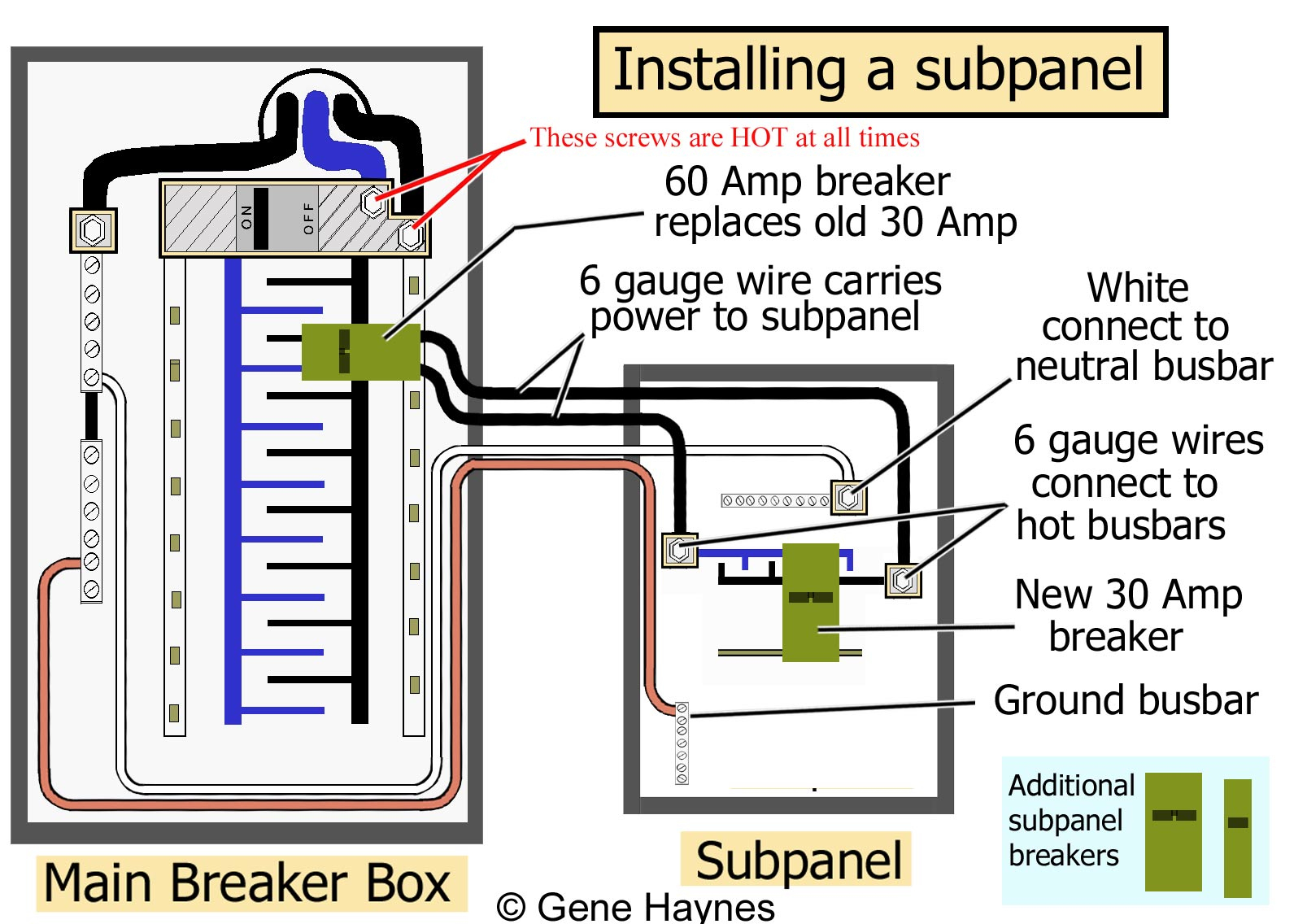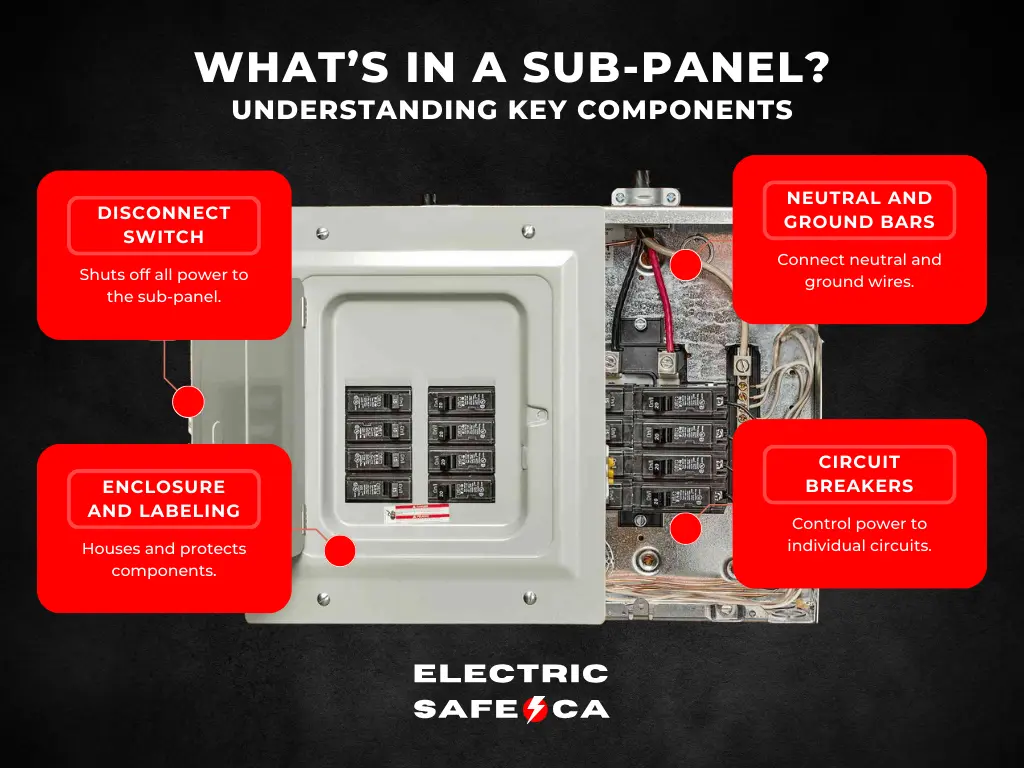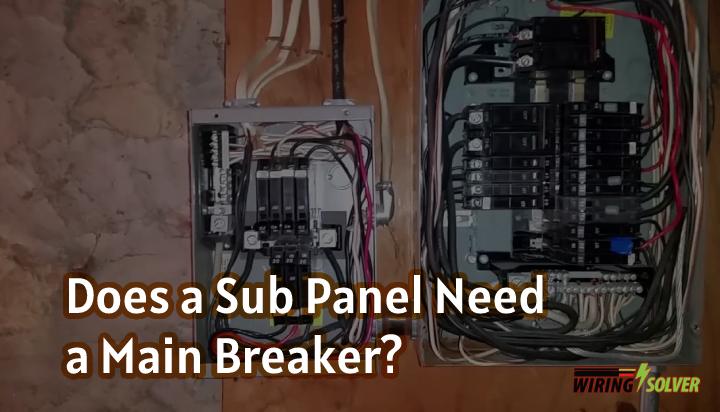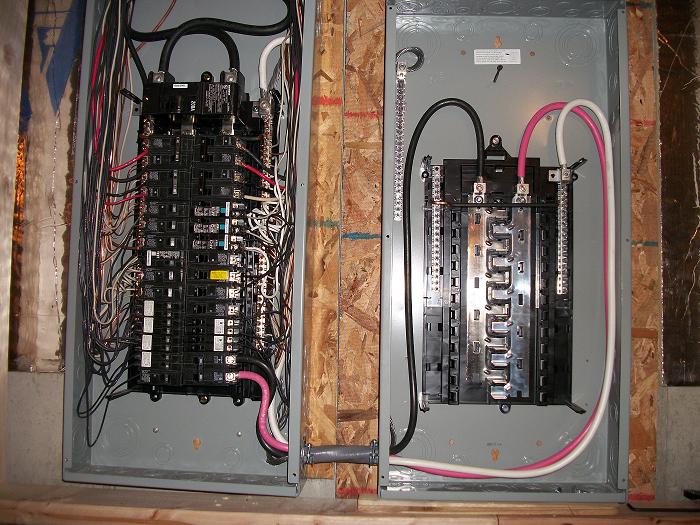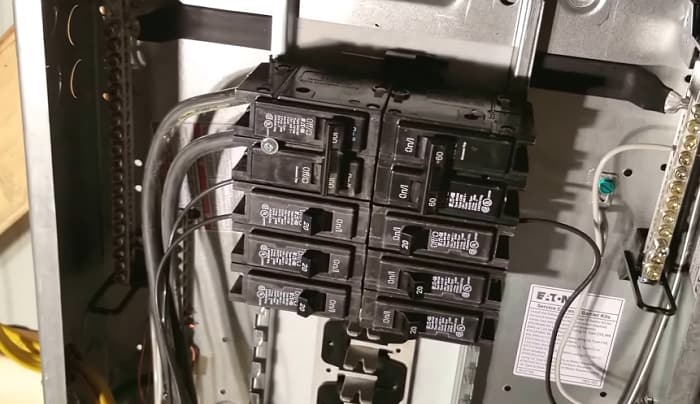Can A Sub Panel Have A Main Breaker

Let's face it: appliances break. A frustrating but common scenario is a non-functioning washing machine. You load your clothes, add detergent, press start... and nothing. No hum, no fill, no action. Before you call a repair technician, let's walk through some basic troubleshooting steps you can safely perform.
Troubleshooting a Non-Functioning Washing Machine
This guide will focus on simple, safe checks. If at any point you feel uncomfortable or unsure, stop immediately and call a qualified appliance repair professional. Safety first!
Step 1: The Obvious – Power Supply
Start with the simplest things first. It sounds basic, but you'd be surprised how often this is the culprit:
- Check the Power Cord: Is the washing machine plugged in securely? Ensure the plug is fully inserted into the outlet.
- Check the Outlet: Test the outlet with another small appliance you know works, like a lamp. If the lamp doesn't turn on, the outlet might be the problem.
- Reset the Breaker: Locate the circuit breaker for the washing machine in your electrical panel (usually labeled "Laundry," "Washer," or similar). The breaker might have tripped. Flip it fully to the "OFF" position and then back to the "ON" position. Listen for a click to confirm it's engaged. If the breaker trips repeatedly, do not keep resetting it. This indicates a more serious electrical issue requiring a professional electrician.
Important Safety Note: Always unplug the washing machine before performing any further checks or repairs.
Step 2: Water Supply
A washing machine needs water to operate. Check the following:
- Water Supply Valves: Locate the hot and cold water supply valves (usually behind the washing machine). Ensure both valves are fully open.
- Water Hoses: Check the hoses for kinks, bends, or damage that might restrict water flow. Straighten any kinks and replace damaged hoses.
- Water Inlet Screens: These small screens are located where the water hoses connect to the washing machine. They can become clogged with sediment. Turn off the water supply valves, disconnect the hoses, and carefully remove and clean the screens. Reattach the hoses securely after cleaning.
Step 3: User Error – Settings and Controls
Sometimes, the issue isn't a mechanical failure but a simple misconfiguration:
- Check the Control Panel: Ensure the washing machine is set to the correct cycle and settings (e.g., load size, water temperature, spin speed). Make sure the timer or cycle selector is properly engaged.
- Door/Lid Switch: Most washing machines have a safety switch that prevents operation if the door or lid isn't fully closed and latched. Check that the door/lid closes properly and that nothing is obstructing the latch. Some models have a visible switch you can inspect. Do not bypass or tamper with this safety switch.
- Child Lock: Some machines have a child lock feature that can disable the controls. Consult your owner's manual to disable the child lock.
Step 4: Basic Component Checks (Proceed with Caution)
Important Safety Note: Only proceed with these checks if you are comfortable and have basic mechanical skills. Disconnect the washing machine from power before attempting any of these steps. If unsure, call a professional.
- Drain Hose: Ensure the drain hose isn't kinked or clogged. Detach it and check for blockages. You may be able to flush it with water to clear any debris. Make sure it's properly connected to the drain pipe and that the drain pipe itself isn't clogged.
When to Call a Professional
The following issues almost always require a qualified appliance repair technician:
- Electrical Issues: If the breaker continues to trip, or if you suspect any electrical shorts or wiring problems.
- Gas Leaks (for Gas Dryers): If you smell gas, immediately evacuate the area and call your gas company.
- Motor Problems: If the motor makes unusual noises, doesn't run, or smells burnt.
- Pump Problems: If the washing machine doesn't drain properly, even after checking the drain hose.
- Timer/Control Panel Malfunctions: If the control panel is unresponsive or displays error codes you can't resolve.
- Complex Part Replacements: Replacing components like the motor, pump, timer, or control panel usually requires specialized tools and knowledge.
- You're Unsure: If you've tried the basic troubleshooting steps and the washing machine still isn't working, it's best to call a professional to avoid further damage or injury.
Can A Sub Panel Have A Main Breaker?
Now, let's shift our focus to a different but related topic: subpanels and main breakers. This is relevant because understanding electrical panels is crucial for home safety and knowing when to seek professional help.
The short answer is: Yes, a subpanel can have a main breaker, and often should.
Let's break that down:
What is a Subpanel?
A subpanel (also known as a distribution panel) is an additional electrical panel that receives power from the main electrical panel (also called the service panel). It's used to distribute power to specific areas or appliances in your home, allowing you to add more circuits without overloading the main panel.
Common uses for subpanels include:
- Garages
- Workshops
- Additions or renovations
- Outbuildings (e.g., sheds, detached garages)
- Areas with heavy electrical loads (e.g., kitchens with multiple appliances)
Why Have a Main Breaker in a Subpanel?
Having a main breaker in a subpanel offers several advantages:
- Overcurrent Protection: Just like the main breaker in your service panel, the subpanel's main breaker protects the subpanel and the circuits it feeds from overloads and short circuits. If the total current drawn by the circuits in the subpanel exceeds the rating of the main breaker, it will trip, preventing damage to the wiring and potential fire hazards.
- Convenient Disconnect: The main breaker in the subpanel provides a convenient way to disconnect all power to the circuits served by that subpanel. This is useful for maintenance, repairs, or during emergencies. You don't have to run back to the main panel to shut off power.
- Isolation: A main breaker isolates the subpanel from the main panel, which can be useful for troubleshooting electrical problems. If there's a problem in the subpanel, tripping its main breaker won't necessarily affect the rest of your home's electrical system.
- Code Compliance: In many jurisdictions, electrical codes require a main breaker in a subpanel, especially if it's located in a separate building or serves a specific area with a significant electrical load.
When is a Main Breaker NOT Required in a Subpanel?
While generally recommended and often required, there are some specific situations where a main breaker in a subpanel might not be necessary:
- Dedicated Circuit: If the subpanel is fed by a single, dedicated circuit from the main panel with a breaker sized appropriately for the subpanel's load, a main breaker in the subpanel might not be required (consult local electrical codes). However, even in this case, having a main breaker is generally a good safety practice.
- Local Codes: Local electrical codes are the final authority. Always consult with a qualified electrician and your local building department to determine the specific requirements for your situation.
Sizing the Main Breaker in a Subpanel
It's crucial to size the main breaker in the subpanel correctly. Here are some key considerations:
- Ampacity of the Feeder Wire: The main breaker in the subpanel should never be larger than the ampacity (current-carrying capacity) of the wires feeding the subpanel from the main panel. This is to protect the wires from overheating and potential fire hazards. For example, if the wires feeding the subpanel are rated for 60 amps, the main breaker in the subpanel should be 60 amps or less.
- Load Calculation: A proper load calculation should be performed to determine the total electrical load the subpanel will serve. This calculation should consider all the appliances, lights, and other electrical devices that will be connected to the subpanel. The main breaker should be sized to handle the calculated load.
- Consult a Professional: Sizing electrical components is a critical task that should be performed by a qualified electrician. Incorrect sizing can lead to overloads, overheating, and potential fire hazards.
Connecting a Subpanel: A Job for Professionals
Important Warning: Connecting a subpanel involves working with high-voltage electricity and requires a thorough understanding of electrical codes and safety procedures. This is not a DIY project for most homeowners.
The process typically involves:
- Turning off the main breaker in the service panel.
- Running properly sized wires from the main panel to the subpanel.
- Connecting the wires to the main breaker in the service panel and to the main lugs (or main breaker) in the subpanel.
- Grounding and bonding the subpanel according to code requirements.
- Connecting the individual circuits to the breakers in the subpanel.
- Testing the subpanel to ensure it's working properly.
Even with detailed instructions, the risk of electrical shock, fire, or damage to your home's electrical system is too high for inexperienced individuals to attempt this work. Hire a licensed electrician for subpanel installations and any other significant electrical work.
In Conclusion
Understanding basic appliance troubleshooting and the function of electrical panels empowers you to address minor issues safely and confidently. Remember that safety is paramount. When in doubt, always err on the side of caution and seek the help of a qualified professional. By knowing your limits and respecting the power of electricity, you can keep your home safe and functional.
